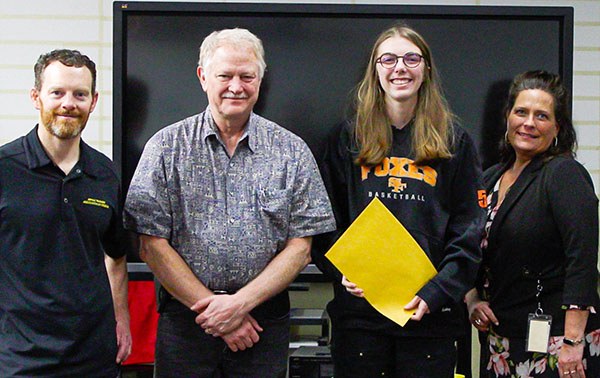By Melissa Wagoner
Every time a member of the Asphalt Pavement Association (APA) of Oregon is killed in a work zone related accident, executive director John Hickey hand-delivers a check for $5,000 to the deceased person’s family.
“The idea is that most of the time the worker is the primary breadwinner,” Hickey explained. “Very often these people are just getting started in life, they have bills and not a lot of savings and now the family has to pay for a funeral…I’ve had my job since the end of 2014 and I’ve given a check at least once a year, every year except last year and it sucks… It becomes more real when you’re looking at a family who has lost someone.”
But it’s not just members of the APA who face the daily consequences of work zone accidents, employees of the Oregon Department of Transportation (ODOT) are also impacted by increasing work zone injuries and fatalities – which rose 10.8 percent nationally between 2020 and 2021.
“The ODOT people know… they lose people as well,” Hickey said. “Because if you get into a car accident [in a work zone] and you’re in your car, it can be really bad but you have a seat belt and airbags. A worker on the highway has a helmet sometimes, or a hard hat. That does nothing.”
It’s these dire consequences that prompted, in 2022, representatives from both organizations to form a committee whose sole purpose was coming up with effective ways of reducing the number and severity of work zone collisions. Hickey’s proposal was young driver education.
“[T]his committee and I started looking into it and we found we do virtually nothing to talk to kids about work zones specifically,” Hickey – who was inspired by the experience of teaching his own child to drive – said. “So, we are working on revising the driver’s manual.”
But that change, along with a change to the state’s driver education courses, will take time. The committee wanted something that would increase work zone safety now.
“Then I came across a program they started in Massachusetts… An engineer there came up with… [the idea to] have college kids design work zone safety messages,” Hickey recalled. “I thought, it’s a good idea but why college kids…?” After all, it’s high school students who are most often learning to drive.
With that thought in mind, the committee set to work, creating a contest designed to encourage beginning drivers to think about the issue of work zone safety.
“Most Departments of Transportation have a safety budget…” Hickey said, recalling his pitch to ODOT, which supplied the funding needed for both the billboard and the awarded prizes.
“What better way to spend it than to educate the next generation of drivers?”
Hickey also reached out to the Willamette Education Service District (WESD) – an agency serving 11 Oregon school districts – for assistance in getting the word out to schools in ODOT regions one and two.
“This collaborative effort aims to connect students with real world experiences, providing a platform for students to showcase their creativity while contributing to the community,” Amy Caulder, Senior Manager of Career Connected Learning for WESD, said. “It goes beyond the theoretical and empowers students to become problem solvers, critical thinkers and effective communicators. By working on a project with tangible outcomes, students gain invaluable insights into the dynamics of the world of work.”

With 86 initial submissions, the committee narrowed the selection down to two designs – one from Grant High School and one from Silverton High School – which they felt were both unique and on-brand.
“I was surprised I won,” SHS senior Kristina Baldwin said, “because I just quickly whipped up a design.”
Erected on two billboards – one in Eugene and one in Salem – Baldwin’s winning proposal features the sentence, “Don’t drive reckless, you might end up… breathless,” ending in a heart rate EKG line.
“When you see it you’re thinking, that EKG is a symbol of life,” Hickey said, which is exactly what he wants all drivers to remember: work zone safety isn’t just about avoiding tickets, it’s about saving lives.
